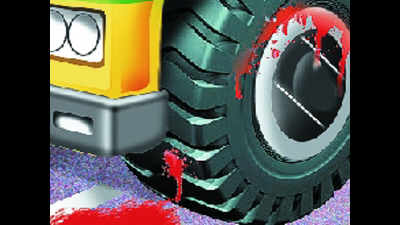- News
- City News
- delhi News
- 80% rise in fatalities caused by cluster, DTC buses this year
Trending
This story is from July 18, 2019
80% rise in fatalities caused by cluster, DTC buses this year
There has been an 80% spurt in fatalities caused by cluster and DTC buses this year, in a clear indication of the rising danger from rashly driven buses in the capital, Delhi Police data reveals.

Representative image
NEW DELHI: There has been an 80% spurt in fatalities caused by cluster and DTC buses this year, in a clear indication of the rising danger from rashly driven buses in the capital, Delhi Police data reveals.

The data also found private cars to be the biggest killers on the roads with 97 fatalities, followed by heavy transport vehicles and trucks with 71 fatalities.
Cluster buses were found to be involved in 18 fatalities till May 31 this year, compared with 10 during the same period in 2018. DTC buses were involved in nine fatalities, as against five in 2018.
Delhi has about 5,000 buses on the roads on any given day. The drivers who are supposed to be trained in sticking to the left lane are often found violating lane rules and jumping signals. It was found that most drivers employed by DTC or DIMTS had earlier driven private vehicles or were semi-skilled. Even though the bus operators claim to have sensitised them on handling heavy vehicles, the drivers often seem to turn a blind eye to rules.
Most cluster buses driven way above the speed limit
Earlier this week, a woman was killed and four others seriously injured when a cluster bus mowed through several vehicles on D B Gupta Road in central Delhi. Though the driver claimed that the brakes had failed, passersby told cops that the driver was reeking of alcohol. Cops are awaiting forensic reports to establish the cause of the accident.
“Since no incentives are given to drivers for reaching early, they seem to be racing on the roads purely to save time before the next trip,” said a police officer. During the peak hours, cops rarely stop drivers for an offence, since flagging down a bus would stall traffic during the busy period. Police officers say most of the violations take place during peak hours when traffic volumes are heavy.
While their counterparts in the DTC face serious consequences if their buses are found to be involved in accidents, cluster bus drivers have a more lenient penalty.
Even though the government claims to have fitted GPS devices to track their movements on a map, in reality none of these devices are functional.
“By tracking cluster buses through GPS, we have found that they usually speed at around 60 kmph despite the prescribed limit being 40 kmph,” a transport department official said.

The data also found private cars to be the biggest killers on the roads with 97 fatalities, followed by heavy transport vehicles and trucks with 71 fatalities.
Cluster buses were found to be involved in 18 fatalities till May 31 this year, compared with 10 during the same period in 2018. DTC buses were involved in nine fatalities, as against five in 2018.
Together, public transport buses figured in 27 fatalities in the five-month period, sharply up from 15 in the same period last year. The number swelled to 45 when crashes caused by RTVs and state transport buses were added. This is nearly double the figure for the same perod in 2018.
Delhi has about 5,000 buses on the roads on any given day. The drivers who are supposed to be trained in sticking to the left lane are often found violating lane rules and jumping signals. It was found that most drivers employed by DTC or DIMTS had earlier driven private vehicles or were semi-skilled. Even though the bus operators claim to have sensitised them on handling heavy vehicles, the drivers often seem to turn a blind eye to rules.
Most cluster buses driven way above the speed limit
Earlier this week, a woman was killed and four others seriously injured when a cluster bus mowed through several vehicles on D B Gupta Road in central Delhi. Though the driver claimed that the brakes had failed, passersby told cops that the driver was reeking of alcohol. Cops are awaiting forensic reports to establish the cause of the accident.
“Since no incentives are given to drivers for reaching early, they seem to be racing on the roads purely to save time before the next trip,” said a police officer. During the peak hours, cops rarely stop drivers for an offence, since flagging down a bus would stall traffic during the busy period. Police officers say most of the violations take place during peak hours when traffic volumes are heavy.
While their counterparts in the DTC face serious consequences if their buses are found to be involved in accidents, cluster bus drivers have a more lenient penalty.
Even though the government claims to have fitted GPS devices to track their movements on a map, in reality none of these devices are functional.
“By tracking cluster buses through GPS, we have found that they usually speed at around 60 kmph despite the prescribed limit being 40 kmph,” a transport department official said.
End of Article
FOLLOW US ON SOCIAL MEDIA










